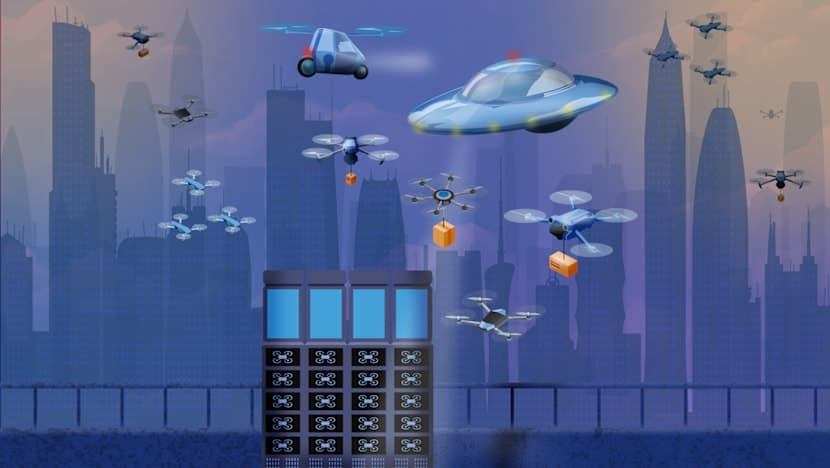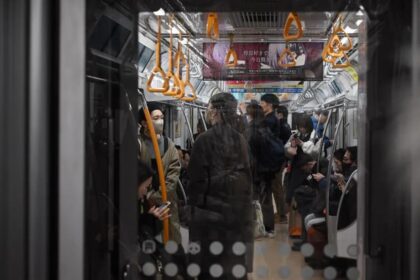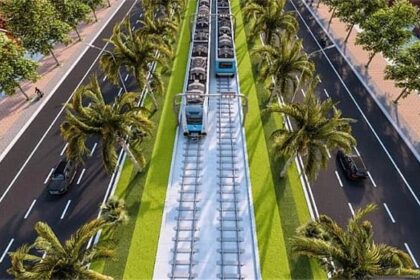The race to open the skies just above city streets
China is moving to make drones and pilotless air taxis part of daily business, treating the low altitude economy as a new engine for growth. The idea is simple. Use the airspace below roughly 1,000 meters for commercial activity, from delivering medicine and parcels to carrying tourists above a riverfront. National planners see a vast market taking shape if rules, safety and infrastructure can keep pace with innovation.
- The race to open the skies just above city streets
- What is the low altitude economy?
- Policy push, projections and who is in charge
- Cities and corridors where China is moving first
- Technology constraints and a safety first rollout
- Cargo leads while passenger services build toward scale
- Regulating a crowded sky
- International stakes and standard setting
- Exports and ASEAN testbeds
- Business models, costs and infrastructure
- What to Know
Local governments, led by Guangdong province and cities such as Shenzhen, Guangzhou and Zhuhai, are mapping routes, building small landing sites and inviting companies to test real services. Certification milestones are appearing as well. Passenger craft from EHang and its partners have received key approvals to run limited commercial routes for sightseeing. Cargo operators are expanding pilots in logistics, agriculture and emergency response. The momentum is real, yet progress is uneven across regions and aircraft types.
The stakes go beyond novel rides. A robust low altitude sector could sharpen China’s edge in batteries, sensors and avionics, relieve pressure on clogged roads, and lower the cost of moving goods to remote communities. It could also shape global standards for managing thousands of small aircraft over cities. For now, the route to mass passenger service runs through cautious testing, clear rules and a focus on cargo first.
What is the low altitude economy?
The term covers commercial activity in the airspace close to the ground, generally up to 1,000 meters. It includes delivery drones for e commerce, crop spraying, power line inspection, mapping, coastal and pipeline patrols, medical supply runs, sightseeing flights and, eventually, short urban trips in small electric aircraft. The sector also depends on digital tools such as traffic management software, location services and secure data links that let many aircraft share the same sky safely.
How eVTOL aircraft differ from drones
Drones are usually small, uncrewed aircraft that carry cameras or light cargo. Electric vertical takeoff and landing aircraft, often called eVTOL, are larger. They use multiple electric motors and propellers to lift off vertically like a helicopter, then cruise on wing lift to save energy. Most early eVTOL models are designed for one to two passengers on short hops of 10 to 30 kilometers. They promise lower noise than helicopters, zero tailpipe emissions and faster point to point trips across congested cities.
Safety features are central to passenger designs. These include redundant batteries and flight control systems, multiple motors to tolerate a failure, and parachute or autorotation options where applicable. Operators also plan tight route control, conservative weather rules and supervised takeoff and landing pads. All of this aims to build trust before any scale up. EHang’s EH216 S, for example, is a fully electric two seat model with a top speed near 130 kilometers per hour and a range around 30 kilometers that suits rides of a few minutes on designated paths.
Policy push, projections and who is in charge
Beijing has elevated the low altitude economy to a national priority. The Civil Aviation Administration of China and economic planners forecast industry value that could reach about 1.5 trillion yuan in the near term, then grow toward roughly 3.5 trillion yuan by 2035. Other estimates see the sector approaching 2 trillion yuan by 2030. One industry report put the 2023 market near 506 billion yuan with double digit annual growth. The direction is clear, even if the exact numbers differ.
To steer the rollout, a dedicated government unit has been created to coordinate policy across agencies and with the military, which controls much of China’s airspace. The goal is to unify supervision, simplify approvals and build shared systems for traffic management and safety oversight. Several provinces are building networks of landing pads and service points. Hunan has verified dozens of fixed routes to govern local low altitude flights. Pilot cities such as Shenzhen, Hefei, Suzhou, Hangzhou, Chengdu and Chongqing are opening portions of airspace below 600 meters to controlled civilian use.
Regulators say certification and safety rules must adapt to new types of aircraft. Hou Xiaoyu, deputy director of the system certification department at the CAAC Airworthiness Certification Center, said the approval process is being updated to address new safety challenges and technologies.
Cities and corridors where China is moving first
Guangdong is out in front. Shenzhen has opened large areas of low altitude airspace, created test corridors and offered incentives for certified passenger eVTOL operations. Guangzhou and Zhuhai are building services around tourism and short transfers, using a mix of piloted helicopters and autonomous aircraft. Elsewhere, local governments are building simple landing pads near parks, stadiums and transit hubs to seed an early network.
Companies are demonstrating what the new category can do. AutoFlight completed a 52 kilometer cross sea flight between Shenzhen and Zhuhai in about 20 minutes, a fraction of the time by road. EHang is running trial sightseeing rides in Guangzhou and Hefei. In Shanghai, a 100 kilometer helicopter route linking Kunshan and Pudong Airport is cutting a multi hour trip to about 20 minutes at prices pitched to business travelers. On the ground, Meituan says its drones have opened dozens of delivery routes in big cities and have handled hundreds of thousands of orders.
Yue Tingting, vice president at electric air taxi developer Vertaxi, said the market opportunity is large, but scale will rely on strong foundations. She emphasized that airspace management, infrastructure, laws and scheduling systems all have to mature for routine public services.
“We believe China has the potential to become one of the largest and most dynamic markets in this sector globally.”
Technology constraints and a safety first rollout
The most advanced passenger craft still rely on some imported chips, sensors and flight processors, which can slow certification and raise costs. China has clear strengths in batteries, electric motors and manufacturing scale, and it has built its own satellite navigation system, Beidou. Policymakers also point to the homegrown C919 jetliner as evidence that complex aviation programs can mature domestically. Even so, building a dependable stack for automated city flights takes time and data.
Regulators and operators are prioritizing conservative operations. Early services use fixed routes, supervised takeoffs and landings, and tight weather limits. Aircraft design focuses on redundancy, robust software, and failsafe behaviors. Public safety and trust come first, so cargo and sightseeing flights are setting the pace while operators gather performance data and refine procedures. Recent incidents in drone operations have reinforced the need for caution and clear avoidance rules.
Engineers are cautious about promising dates. Wang Huailin, an engineer at Aerofugia, said consumer access will arrive step by step, once aircraft, vertiports and traffic systems align.
“Flying taxis could be widely available to the public within five years.”
Cargo leads while passenger services build toward scale
Heavy and medium cargo drones are advancing fast. Engineers recently test flew a twin engine cargo drone with a payload near two tons for about 20 minutes in Sichuan. The leading state aerospace group flew a 700 kilogram payload model with a range above 500 kilometers and is planning an even larger two ton platform next. Logistics companies are already flying regular deliveries on selected routes, including fresh produce shipments from Hainan to Guangdong.
For operators and regulators, cargo is simpler. A cargo aircraft can be routed over water, industrial zones or fixed corridors, and the risk profile is different from carrying people. It also has clear business value in time sensitive logistics, remote deliveries and emergency response. That is why multiple companies have shifted resources from early visions of city air taxis to revenue flights in delivery, industrial inspections and low altitude tourism while certification for heavier passenger models progresses.
Regulating a crowded sky
The hardest work lies in rules and coordination. China’s airspace is split among the military, civil aviation and local authorities, which creates complex approval paths and varied enforcement. A unified framework is in progress. The aim is to move from one off permits toward standard procedures for route approval, pilotless operations, and maintenance. Provinces are setting up control centers to monitor flights and share data, and national systems for registration and remote identification are taking shape.
How unmanned traffic management will work
Traffic management for small aircraft will be digital. Each aircraft will broadcast identity and position, geofencing will keep drones out of sensitive zones, and software will assign altitude layers or time slots on busy routes. The concept is similar to U space in Europe. Over time, China will need common interfaces so that vehicles from different manufacturers can plug into the same network and be overseen by certified operators. That also means training and licensing for ground crews, maintenance providers and emergency responders.
International stakes and standard setting
Multiple regions are moving in parallel. The United States is advancing through staged certification for eVTOL makers and trials for beyond visual line of sight drone deliveries. Europe is building U space corridors and common safety cases. Dubai has turned aerial mobility into a showcase with public demonstrations and plans for early airport transfers. Japan has leaned into industrial drone use and is preparing passenger pilots around major events. The goal everywhere is the same, safe scale in shared airspace.
China starts with manufacturing scale and a deep supplier base. DJI dominates the consumer drone market, while companies such as EHang, AutoFlight, Aerofugia, Vertaxi and Xpeng’s aviation unit are building passenger models. Industry groups say Chinese entities account for a large share of global drone related patents. Domestic demand, subsidies and public sector use cases help finance early fleets. At the same time, Chinese firms are looking outside the country for growth and certification experience.
Exports and ASEAN testbeds
Chinese manufacturers and service operators are courting Southeast Asia as a proving ground. The region has thousands of islands, long coastlines and cities where road congestion is routine. That makes drones attractive for medical deliveries, coastal monitoring and precision agriculture. Governments in the region are experimenting with regulatory sandboxes, while local startups partner with Chinese suppliers for aircraft, batteries and software. The result is a feedback loop in which flight data and training learned abroad can help refine products at home.
Partnerships in ASEAN also shape standards. Shared projects on traffic management, licensing and data security can support interoperability from early days. Regional adoption then feeds demand for components, which reinforces China’s supply chain for motors, avionics and composite structures. For investors and city planners, this cross border momentum provides more evidence that the category is viable beyond demonstration flights. Policymakers still face privacy and workforce transition concerns, so public engagement and upskilling programs will matter as adoption spreads.
Business models, costs and infrastructure
Tourism routes are expected to come first, followed by airport shuttles and short urban connections. The economics depend on utilization, energy costs and maintenance time between missions. Industry engineers expect near term fares to sit above premium ride hailing rates, with targets that approach car like prices once fleets grow and operations become routine. Vehicle range will rise as batteries improve, but short, well mapped trips will dominate early years.
Infrastructure will decide how convenient these services feel. Cities are planning small pads on rooftops or near transit lines, with charging or battery swap equipment to keep aircraft turning. Scheduling systems must coordinate hundreds of short flights, while security and noise rules protect neighborhoods. Local governments often provide subsidies or guaranteed demand via public safety missions or medical logistics, which helps operators reach break even. Analysts caution that excessive competition or overbuilding can harm the sector, so careful pacing and clear rules are vital.
What to Know
- China is prioritizing the low altitude economy, aiming to use airspace below about 1,000 meters for delivery, tourism and short passenger flights.
- Industry value projections range from roughly 1.5 trillion yuan in the near term to about 3.5 trillion yuan by 2035.
- Guangdong leads with Shenzhen, Guangzhou and Zhuhai opening routes and building landing sites for early services.
- EHang and a partner hold key approvals to run limited autonomous passenger operations, with sightseeing as the first application.
- Cargo drones are scaling faster, including tests of aircraft that can carry up to two tons and regular logistics routes run by major delivery firms.
- Regulatory work continues to unify oversight across military, civil and local authorities and to deploy digital traffic management for dense urban skies.
- Safety comes first, so early operations use fixed routes, tight weather limits and supervised takeoffs and landings while data is gathered.
- Chinese companies are piloting services in Southeast Asia to gain operating experience and help shape regional standards.
- International activity is growing in the United States, Europe, Dubai and Japan, as regions test certification paths and traffic systems.
- Analysts see opportunity, but warn against overbuilding and stress the need for common rules, robust infrastructure and public trust.












